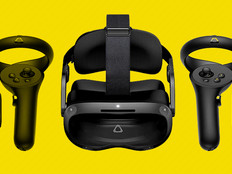Arming Guards With PDAs
Handheld computers improve campus safety and class attendance at this Arizona school district.
Security guards at Phoenix Union High School District have a new weapon to prevent students from cutting class and strangers from sneaking onto campus: personal digital assistants.
When guards come across a student roaming the halls, the guards can check their PDAs, which are preloaded with students’ pictures and their class schedules, to see if the student should be in class. And if suspicious-looking people don’t have student ID cards with them, the guards can check their PDAs to see if they are enrolled. And if they’re not, the guards escort them off the premises.
In the past, guards had to call the registrar’s office on their two-way radios and ask personnel to look up the student information on the computer system. Because the school staff shared the radio airwaves for communication, guards needing information sometimes had to wait for radio chatter to stop before making their requests. Now, the guards can fetch the information by themselves.
Better System Yields Financial Rewards
“It saves a lot of time. The people in registration can focus on doing their jobs without us interrupting them, and we can focus on doing our jobs,” says security guard Stanley Moore Jr. of Carl Hayden Community High School, one of 11 high schools in the Phoenix Union High School District in Arizona.
The district — which educates about 25,000 students — outfitted its security guards with handheld computers two years ago, resulting in higher class attendance and improved campus safety, school district officials say.
The technology has made a dent in deterring students from skipping class and nonstudents from attempting to come onto campus, but some people still try to get away with it, says Stephen Ybarra, principal at Carl Hayden. Sometimes suspended students or recent graduates try to sneak onto campus to hang out with friends. Sometimes nonstudents try to enter to sell drugs and alcohol.
Students are required to wear their ID cards around their necks or on their clothing, so it’s easy to spot people who don’t belong.
“The kids know that when a guard comes up to them, the guard can check which class they should be in, so the students are more honest and get to class quicker,” Ybarra says. “And people who are not supposed to be on campus know that once they’re approached, the guards can find out if they’re students. If they say they lost their ID card and give another student’s name or ID number, we can verify it.”
Before the PDAs, registration staffers could see the students’ pictures, but the guards couldn’t, so registration staff had to describe the students to the guards, which wasn’t always the most reliable way of identifying students. Now, the guards can see the pictures themselves.
The district has benefited from the PDAs in multiple ways: Security guards can do their jobs faster and more efficiently. The two-way radios are reserved for real emergencies. More important, increasing student attendance results in higher student achievement, which in turn helps schools to meet No Child Left Behind requirements, Ybarra says. The technology also provides an indirect financial benefit by helping schools meet the state’s attendance requirements. For example, schools are required to have 94 percent attendance rates. If they fall below that, schools have to return educational funds to the state, he says.
IT’s Role
The district’s Information Technology department came up with the PDA idea when a high school assistant principal had a problem with class tardiness. Security guards routinely ran sweeps of the hallways during each class period, but by the time the guards processed and issued detention slips to the 20 to 30 students rounded up, half the class period would be over, recalls Donald Fournier, the school district’s division manager for information services. With each student, the guards had to radio the registration office to look up the class schedule. The assistant principal wondered if there was a way to speed up the process.
Fournier piloted the PDAs at two high schools for nine weeks, and the technology had an immediate effect. When guards rounded up students in the sweeps, they scanned the barcode numbers of each student’s ID card using their PDA’s barcode readers, and up popped each student’s picture and class schedule on the handheld computer.
To speed up the process, the IT department developed an application that allowed guards to quickly place students on a detention list on the PDAs. When the guards docked the PDAs on their computers later, the detention list would be updated on the school’s student information system.
“Word got around quickly among the students, and they ended up going to class, so now it’s less of an issue,” Fournier says.
Each school uses the PDAs in different ways, he says. Some schools such as Carl Hayden have guards stationed at the front gate, so when students come in, guards check their student ID cards. Other campuses have guards use the PDAs to check students as they go off campus for lunch to make sure it’s actually their lunch period. All the schools use the PDAs in the hallways to make sure students are where they should be.
The devices can also help in emergencies. When a student was hit by a car while crossing a street near campus, security guards scanned the student’s ID card to get the parents’ contact information so they could be quickly alerted that their child was headed to the hospital in an ambulance, Fournier says.
Choosing a PDA
After testing PDAs from different vendors, the school district purchased higher-end Symbol MC50 Enterprise Digital Assistants, which cost the district about $800 each. The PDAs, which run the Windows Mobile operating system, are more rugged than typical PDAs, so they don’t break as easily if dropped, Fournier says. The PDAs feature built-in barcode scanners and cameras, allowing guards to take pictures of such things as graffiti or damaged property.
The district considered consumer PDAs, but the barcode scanners had to be attached as an add-on. If security guards dropped them in a scuffle, they could break, Fournier says.
The technology was fairly simple to implement, he adds. The district focused on Microsoft technology — Microsoft’s SQL Server database and Visual Basic applications on the PDAs. First, the IT staff took the student data from the district’s student information system and copied and reformatted the data to a SQL Server database.
The IT staff installed SQL Server Compact Edition — a free, smaller version of the same database — onto the PDAs, so when guards synchronize their PDAs with their computers, the most up-to-date student information is replicated from the main database to the PDA database.
“The information is updated every night, such as whether students are active, what classes they are in, and their parents’ addresses and contact information,” Fournier says.
The IT staff built a Visual Basic application to view the student information on the PDAs. Fournier’s student assistant — an honor student from Central High School — helped develop the application, he says.
For security, the PDAs lock up after 15 minutes of inactivity and require a password to unlock, Fournier says. And to make sure the student information doesn’t fall into wrong hands if the PDAs are lost, Fournier has set it up so that the PDAs must be synchronized with a guard’s computer every three days. And if it doesn’t happen, the PDA is reset and the database is erased, he says.
Successful Implementation
After its successful pilot, the district two years ago purchased six PDAs for each school. The IT department developed a booklet on how to use the device and trained each school’s lead security staffers and educational technologists, whose job is to help faculty use technology on campus. The PDAs are easy to use and required little training, says Moore.
“It’s simple. We just scan the IDs with the bar code scanner and all the information pops up,” he says.
Ybarra, the principal at Carl Hayden, says the PDAs get heavy use every day by the school’s security guards.
“Keeping kids in class is a high priority, and the PDAs make our job of keeping attendance high easier,” Ybarra says.
Technology’s Role in K–12 Security
While there are all kinds of new security products on the market, the first and best line of defense is a well-trained, highly alert school staff and student body. Any type of technology is a supplement to, but not a substitute for, a more comprehensive school safety program built on a foundation of well-trained people.
The security equipment of most interest to school administrators and safety personnel tends to be products that center around improved day-to-day and emergency communication, such as office-to-classroom communication, two-way radios, cell phones, public address systems and mass notification systems.
Access control (locking doors, buzzer-camera-intercom systems, ID badges and the technology that scans drivers’ licenses, checks sexual offender databases and prints ID badges) is also an issue of concern, with administrators continuing to struggle to create a balanced, welcoming environment for legitimate users while keeping out unauthorized persons with ill intentions.
Many schools have installed surveillance cameras in the past decade. Administrators recognize that cameras deter those who can be deterred and serve as evidence against those who cannot be deterred. Cameras have played a role in emergency preparedness, with a number of schools employing systems capable of being remotely monitored by police and school officials in a crisis. Computerized mapping of school floor plans and blueprints for emergency purposes has also been a resource for some schools. Kenneth S. Trump is president of National School Safety and Security Services, a private, independent consulting corporation based in Cleveland, Ohio.
Detroit Guard Protects; Helps Pay for College Costs
As a high school security guard, Gloria Payne does more than just make sure students are safe. She builds relationships with the kids and nurtures them. And for the last three years, she’s been giving what she can to help fund their education.
Payne, a public safety officer at Detroit’s Western International High School, established an annual scholarship in 2005 in honor of her 27-year-old son Kenneth, who died in a car accident a week before Christmas in 2004. Kenneth, the younger of Payne’s two sons, valued education. He attended Wayne State University and continued his education while working at Chrysler.
“I’ve always been into education and love children, and I figured there is no better way to honor his memory,” Payne says. “Our high school is multicultural. Many children are from low-income families, and they don’t have enough funds to cover books and other costs for college. So my scholarship is mostly a little extra to help them get over the hump.”
She saves year-round to fund the scholarship. In 2005, she awarded $5,000 — $1,000 each to five students — for their college education. In 2006, she gave one $500 scholarship. This year, she awarded $300 to a student.
“This year I gave a young lady $300 and I apologized it couldn’t be more. I’m a one-income household. I’m not rich, but I do what my heart tells me to do,” she says.
To bolster next year’s scholarship, she’s raising funds by holding a raffle. Payne, who’s worked as a security guard for 20 years, is well respected at Western International High School. Students often approach her to discuss their problems. She gladly dispenses life advice, asks how they’re doing in their classes and reminds them to take education seriously. “It’s all about love,” Payne says.








